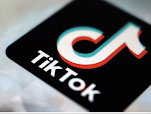 |
| Source: www.ctff.us |
By Sam Piha
We interviewed Malia Villarreal (Public & Strategic Development Manager) and Mike Snell (CEO) at California Teaching Fellows Foundation (CTFF) which views afterschool programs as a valuable experience for future teachers. Below is part 2 of this interview. You can view part 1 here.
Q: What are the responses of teaching fellow participants to the afterschool experience and what results have you seen?
A: Reflecting on her experience as a student-teacher during the pandemic, Erika made connections on how her experience and training in the afterschool program enabled her to rise to the occasion. Erika expressed that the culture of afterschool taught her some very important lessons, “afterschool never happens how it is supposed to, but I was taught no matter what, it (the after-school program) needs to work out for the students.” She learned early on that she must always have a plan A, B, C, and D. Her experience as a tutor first, and later as a site coordinator taught her to think on the spot and basic classroom management skills; which she admitted didn’t come naturally to her in the beginning. It took a lot of coaching and patience to master those skills. Looking back on her journey in afterschool, Erika revealed she never would have gone through with pursuing a teaching career if she didn’t have the opportunity to practice and receive consistent feedback.
Trainings during the Teaching Fellow Academies really stuck with me, and I had the opportunity to directly apply it. There were Ah-ha moments when I went back to my school site and would witness how what I was taught was all true.” – Erika Martinez
Erika stated the cycle of training, hands-on practice, and feedback were the keys to her success. Needless to say, Erika credits much of her current success to her time spent working in expanded learning programs.
 |
| Source: www.ctff.us |
Q: Is this program particularly important now as a result of the COVID pandemic?
A: COVID-19 continues to teach us many new lessons while reinforcing much of what we already knew as educators and humans. Now more than ever, students need social and emotional support from our expanded learning and school staff, and our working parents need a safe and supportive environment for their children during the critical out-of-school time hours.
COVID-19 has exacerbated the teacher shortage crisis and we’re seeing record college dropout rates which is a recipe for a student equity disaster (Carver-Thomas et al, 2021). Our role as a community benefit organization is to elevate the voices of our two critical stakeholders: K-12 students and our college students (Teaching Fellows). We know our community needs and deserves highly qualified and diverse teachers, especially in our historically underserved communities. Our experience working with diverse first-gen college students for the last 20 years has taught us that despite their navigational capital, managing the process of graduating college and entering a credential program is complex.
The pandemic has made college even less accessible to students. When we ask Teaching Fellows why they’re dropping out of college and teacher credential programs, they say “I can’t afford college anymore.” Being mostly first-gen college students, our Teaching Fellows need to be able to work and support their families while they attend college. They say their largest barriers are test and tuition costs, inconsistent class schedules that don’t allow them to work, credential programs/college classes being (geographically) too far from where they live, and an overwhelming feeling that they do not belong.
Expanded Learning programs and models like the CTFF have tremendous opportunities to challenge traditional teacher education models, to work to align systems that serve youth and communities and share our knowledge and experiences to further this important work and foster a sense of belonging.
MORE ABOUT...
Malia Villarreal, Public & Strategic Development Manager, California Teaching Fellows Foundation has worked in the expanded learning field for six years at the CTFF where she has worked on a plethora of projects and strategic initiatives. She has graduated over 100 college interns in an innovative pipeline that yields talent and champions of the out-of-school time field in the Central Valley, and has built relationships with local, state, and federal elected officials, multisector stakeholders, and community influencers to promote afterschool programs and the California Teaching Fellows model in the San Joaquin Valley and beyond.
Mike Snell, CEO, California Teaching Fellows Foundation is the Chief Executive Officer of CTFF. The mission of CTFF is to inspire next-generation leaders with a passion for teaching and learning while impacting the lives of youth. Mike’s personal mission is to link talent to opportunity in the kindergarten through the college pipeline. Mike invests a significant portion of his off-work hours serving and supporting organizations aligned with his personal and professional goals and making a significant impact in California’s Central Valley. Mike serves and has served on various committees at the California Department of Education Expanded Learning Division.
Erika Martinez, Teaching Credential Candidate and Former Teaching Fellow, is a first year, first-grade teacher at Williams Elementary. She is currently working on her Master’s in Social-Emotional Learning. She recently graduated from the Fresno Unified Teacher Residency Program through National University, where she obtained her Multiple Subject Teaching Credentials. Prior to that, she attended Fresno Pacific University, where she completed her Bachelor’s in Liberal Studies. She has two years of experience teaching Drama through Fresno Unified School District (FUSD), and six years of experience working in afterschool programs through California Teaching Fellows Foundation (CTFF) where she gained nearly 3,000 hours of hands-on experience and more than 120 hours of professional and personal development.


























